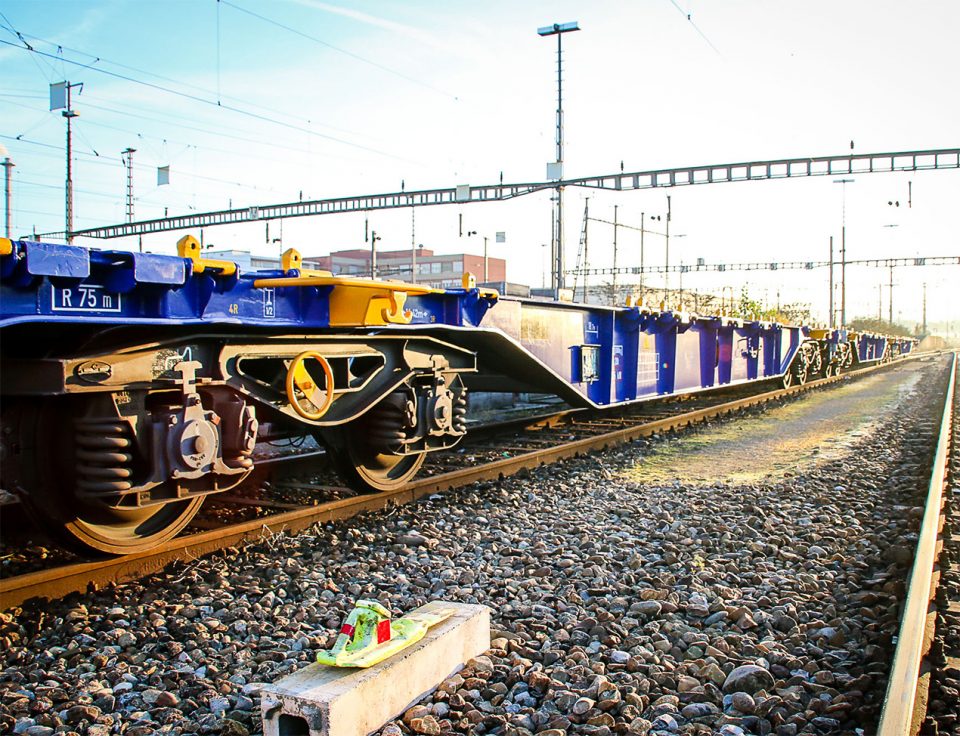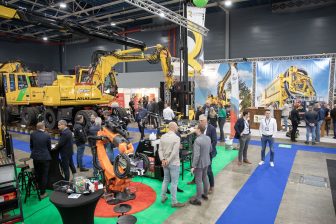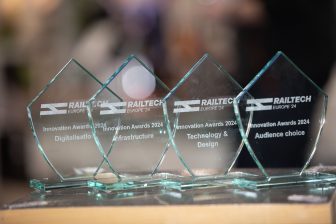
SBB Cargo develops ‘freight car of the future’
Swiss rail freight specialist SBB Cargo is bringing to life what it calls the ‘freight car of the future’ – saying it will be quieter, lighter and more powerful than ever before. Working with partners, SBB will this year launch a four-year test phase involving 16 converted cars.
The 5L-Zug comprises the five major improvements that the new goods wagon will bring: quiet, light, robust, logistical, and life-cycle-cost-oriented. Innovative components of this pioneering work include radially adjustable wheelsets in the bogie instead of being permanently mounted. The result is reduced wear & tear and less noise, benefiting not only the traditional freight customers but people living near the railway.
This is complemented by new disc brakes and silencer-equipped wheelsets, resulting in a noise reduction of five to 10 decibels, which is almost twice as low as before. This is reflected by the overwhelming majority of goods wagons currently in service, which are traditionally equipped with composite brake blocks (or ‘K-soles’). SBB says that the freight car of the future will be no louder than a passenger train. Greater efficiency, particularly in the marshalling yards, will also be achieved through the use of automatic couplings.
Pioneering work
SBB Cargo has carried out this work in collaboration with Technical Innovation Circle for Rail Freight Services (TIS) and several component manufacturers. The project is supported by the Swiss Federal Office for the Environment and Transport (FOEN). The first car is currently being converted and, after approval, it will be deployed in regular operations from the middle of this year. It is designed to achieve a running distance of at least 400,000 kilometres from the middle of 2018.
This new generation of goods wagon builds on SBB’s reputation as one of Europe’s top rail freight innovators, with various projects ongoing to develop the automation of goods. It has just embarked on a programme to fit its entire fleet of wagons – around 5,000 in total – with electromagnetic tags that will enable efficient tracking and improve safety. To do this, it is utilising technology made possible by the rapid rise of Radio Frequency Identification (RFID) in the cargo sector. From activating an arrival alarm at journey’s end to tracking the wagons in ‘real time’ during travel, SBB says there are significant benefits to be had through the use of RFID, which uses electromagnetic waves to transmit information between the wagons and transponders along the route.
Customers’ requirements
Two tags are attached to every car, and the reading system indicates at what time a particular wagon has passed a certain point. It can also read what is transported, and can thus respond to different customers’ requirements. Some 1,000 wagons have already been equipped, with the rest to follow by the end of the year.
SBB Cargo says that the development of RFID technology on its rolling stock and network is helping bring about a whole new logistics concept within the freight sector, and that it makes rail freight ‘technologically fit’ for the future demands of the market. Freight cars are already equipped with features including weighing technology, temperature monitoring, GPS software, and a power supply for cooling containers throughout the SBB network.
New timetable
SBB has also rolled out a major new change in how it schedules its freight transport, by introducing a new booking system that minimises impact on the passenger network. It worked for two years to develop a new timetable, which now provides more weekend services and express connections. SBB accounts for around a quarter of all the goods transported in Switzerland by rail and road, with around 1,300 kilometres of track linking the modes. It employs some 3,000 people and has at its disposal more than 6,800 freight cars and 500 traction units.



